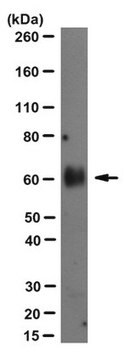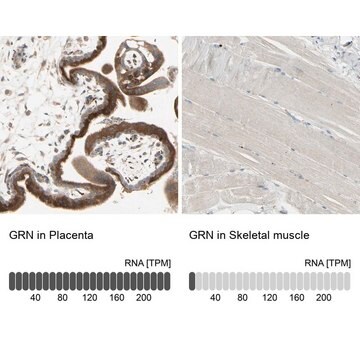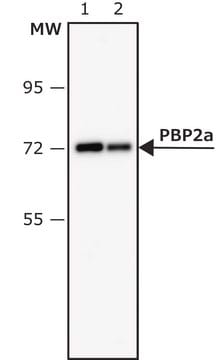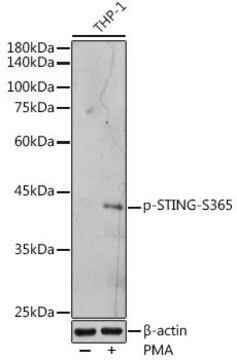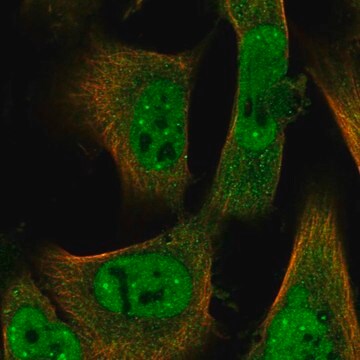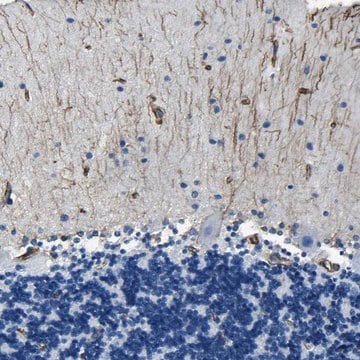詳細
Granulin is composed of 7.5 repeat units of a unique, structurally defined cysteine-rich granulin-eptihelin motif.
Granulins (also known as granulin/epithelin precursor [GEP]) are a secreted growth factors expressed mainly by granulocytes. They are secreted as high molecular weight precursor proteins, pro-granulins (PGRN), with seven and a half repeats of 12-cysteine granulin motif. Five human granulins have been isolated and they have a common precursor. PGRN is highly expressed in rapidly proliferating epithelial cells such as keratinocytes. It is also synthesised in neurons of cerebral cortex, hippocampus and cerebellum, central and peripheral nervous system.
免疫原
synthetic peptide corresponding to a sequence at the C-terminus of human granulin precursor, conjugated to KLH.
アプリケーション
Anti-Granulin (C-terminal) antibody produced in rabbit has been used in immunoblotting, immunofluorescence and western blotting.
生物化学的/生理学的作用
Granulins are potent mitogenic factors, and mediate proliferation, motility, wound healing and anchorage-dependent growth of fibroblasts. Some of the pathways that are associated with PGRN are MAPK and PI3K/Akt.
Progranulin gene is mitotically quiescent epithelia and is expressed in low levels. It stimulates the proliferation in epithelial cells and promotes their anchorage-independent growth. Overexpression of progranulin confers epithelial invasiveness and tumorigenicity. There is growing evidence that granulin is involved in embryonic and neonatal development, placenta, the epidermis, vasculature angiogenesis, and the developing nervous system. Granulin stimulates an increase in cyclins D1 and cyclins B. Granulin overexpression has been associated with many cancers, including glioblastoma, breast, renal and invasive ovarian cancers. Granulin is highly expressed in motor neurons, it regulates neurite outgrowth and promotes neuronal cell survival. Progranulin gene mutations and PGRN gene haploinsufficiency have been recently proposed to cause a form of frontotemporal dementia (FTLD). It is also associated with the formation of pathogenic Tar-DNA Binding Protein 43 (TDP-43) and ubiquitin positive inclusions.
物理的形状
Solution in 0.01 M phosphate buffered saline, pH 7.4, containing 15 mM sodium azide.
免責事項
Unless otherwise stated in our catalog or other company documentation accompanying the product(s), our products are intended for research use only and are not to be used for any other purpose, which includes but is not limited to, unauthorized commercial uses, in vitro diagnostic uses, ex vivo or in vivo therapeutic uses or any type of consumption or application to humans or animals.
